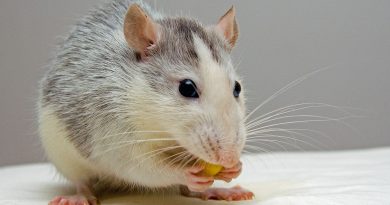Is the Genetic Manipulation of Animals Right?
In discussing this topic, a method of ethical evaluation will be proposed based on three values: Respect, Survival and Diversity which, once considered, can be followed by familiar utilitarian calculations. The method necessitates equal consideration of each of these principles, and the consequence of this is a reduced ethical viability for continued animal manipulation as it appears today.
Is the genetic manipulation of animals, right? There are three ways to approach the question, or rather three different levels: firstly, we can simply deny it is ever morally correct to manipulate animals in any way for human benefit; secondly, if we assume it is justifiable to use animals for human needs: to then weigh up the complex situations which are less or more morally apprehensible; and thirdly, permitting manipulation only in one case: when nature is the targeted benefactor. Genetically engineered animals refer to (according to the CCAC Canadian Council on Animal Care) [Ormandy 2011]: “an animal that has had a change in its nuclear or mitochondrial DNA…achieved through a deliberate human technological intervention”. This, you will notice, excludes selective breeding but is meant to include cloned animals.
Denying Use of Animals in Any Context:
For some the consideration could end here: there is no situation in which we could justify manipulating animals for our own ends. This includes genetic engineering, but is not limited to it: we can consider also animal use for medical research, drug testing, or production of antibodies. There is, for those proponents, no difference between this abuse of power hierarchy and that of racism and sexism, they are one and the same issue and it is astounding to those who see this that others do not. These views, especially on sexism, are espoused by eco-feminism, which uses gender theory to compare man’s subjugation of women with that of man’s dominion of nature — the paradigm myth of Adam and Eve reverses humanities’ previous Neolithic reverence and deification of fertile Goddesses and animal Spirit Guides, instead demonising all that is Earthly, natural and female. In any context, however, abuse of power is one-to-one with discrimination. One day we may look back at our progress as a species, and realise animal use is tantamount to slavery, or homophobia, or misogyny [Gaard 2002].
The same issue arises when we consider animal use for food — but there too we have our answer, we are smart enough to be able to sustain ourselves without animal consumption — so why do we do it? Because we can? There is a maxim here which originates from our instinct for Survival: in nature we see the profit from positions of biological dominance as justified because they are necessary. Humans are ultimately cogs of the same wheel, and whilst certain rules may be tweaked as a result of our unique status, we must also conclude that what is necessary for Survival is permissible. When the boundaries of this maxim are stretched, when specific animal manipulation is not closely related to a Survival instinct: when it is purely academic interest, when it is not medical, when it is not absolutely necessary, or when it is use just for teaching then we find the behaviour unjust. A Survival necessity is however a tricky concept, as one sees with Bernard Marx in A Brave New World – what is necessary for Survival can be less biologically determined and more linked to specific desires of the individual. This is a manifestation of the complexity of our human condition and needs to be taken account. The extent to which we should weigh it in will be tempered by the following two judgement criteria.
Pragmatic Evaluation of Complex Situations:
Unfortunately, we live in the world we live in, and although significant change only comes radically with paradigm shifts, we nonetheless have a day-to-day discussion of minute details regarding, in this context, animal manipulation. It is prudent to consider the arguments in some detail.
Take, for examples, animals genetically recombined with Green Fluorescence Protein (GFP) DNA (images can be found with a google search). The protein, giving fluorescent properties, was originally isolated from the jelly fish Aequorea Victoria. This bespeaks a sick Oryx and Crake-esque perversion of science. Science is only a tool and needs a philosophy to guide it – discovery and experimentation for their own sake are both dangerous and naïve. We play a lottery with each discovery we make. There are various attempted explanations behind the photos: fluorescence allows for betting tracking of brain development, enhanced practice of gene editing is research for human treatments, or, according to Alba the glowing bunny’s creator-father Eduardo Kac, the motivation is simply ‘transgenic Bio Art’ [Kac 2000].
Let’s take a step back from these overtly disturbing cases, for risk of making of them a Straw Man, and direct ourselves to those more common in research. We may genetically modified animals to produce human disease models to monitor and better understand the genesis and potential cure of different illnesses — here we may produce discoveries that save many, thousands, hundreds of thousands of human lives. But how did we get there? Why are these human lives more valuable than the animals? A utilitarian answer is that we are weighing up the numbers, reducing the suffering overall. Utilitarianism is an important philosophy, but it is not the only one necessary in these considerations. There is an argument that the animals would not live in the first place were they not bred for testing – but being given life is only another unit of this utilitarian metric and is a long way away from significant enough to tip the scales in favour of breeding animals for manipulation. Put another way: are they supposed to be thankful for their enslavement and consequent butchering?
The missing principle is that of intrinsic value, or Respect. The importance of asking ‘how did we get here?’ when considering research results from animal manipulation in part arises from the concept of this intrinsic value: a respect for animals as ends in themselves, a result of their interest of self-perpetuation – otherwise known as living.
Animal Benefactors:
The Three Rs (Replacement, Reduction, Refinement) aim to minimise the utilitarian negative effects of animal usage – they are considered “principles of humane experimental technique” [Ormandy 2011]. Indeed, the issue is right here: humane — this is supposed to imply ‘morally correct’, but what it actually means is usage which benefits mankind. Utilitarian evaluations are necessary, but the main issue is that we have already ruined the Diversity on this planet and the question is how to we get back to where things should be — humans are not accountable to nature’s checks and balances in the same way overpopulation of species in the wild are. To this end genetic modification may be reasonable, its immorality stems more from the situation we have brought things to rather than in the deed itself. This requires careful evaluation and is useful only in rare cases — as again we do not need unintended consequences which further ruin nature’s Diversity. An example is EnviropigTM, a pig that is genetically engineered to produce less phosphorus containing manure. Questions of recreating lost species or giving dying species genetic advantages against illnesses require careful deliberation, but with a balance between principles of Survival, Respect and Diversity — they may be more feasible than they initially sound.
Final Point
One final thing which is worth considering: why does modification and use of bacterial or yeast cells for protein production or genetic testing — feel ethically harmless? Is that rational? Because they don’t have a face? They aren’t conscious? How do you even define consciousness; at what point does it arise — does it depend on an ability to collapse a wavefunction or rather the ability to self-reflect? All life should be treated equally (Respect), and we should consume only that which is directly necessary for our Survival. A consideration for Diversity at least is somewhat superfluous, bacteria have been here long before humanity and will be there long after. Nevertheless, considering this there is a troubling conclusion, bacterial lives may be just as important and it comes down to the following: there is something, rather than nothing – that is what existence is, what came after the Big Bang at least. This something is made up of diverse objects and one absolute moral truth is that we should preserve this Diversity, as by doing this we uphold the one thing that gives anything meaning: existence — beyond that, there is nothing.
[1] Ormandy E.H et al, Animal Welfare Bien-etre des animaux, Canadian Veterinary Journal, 2011
[2] Gaard G., Vegetarian Ecofeminism: A Review Essay, Frontiers: A Journal of Women Studies, Vol. 23., 2002
[3] Kac E., Telepresence, Biotelematics, and Transgenic Art, Kibla, 2000
[4] Cockell S., Microbial rights?, EMBO Reports, Vol. 12., 2011



